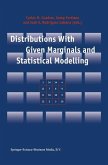During the investigation of large systems described by evolution equations, we encounter many problems. Of special interest is the problem of "high dimensionality" or, more precisely, the problem of the complexity of the phase space. The notion of the "comple xity of the. phase space" includes not only the high dimensionality of, say, a system of linear equations which appear in the mathematical model of the system (in the case when the phase space of the model is finite but very large), as this is usually understood, but also the structure of the phase space itself, which can be a finite, countable, continual, or, in general, arbitrary set equipped with the structure of a measurable space. Certainly, 6 6 this does not mean that, for example, the space (R 6, ( ), where 6 is a a-algebra of Borel sets in R 6, considered as a phase space of, say, a six-dimensional Wiener process (see Gikhman and Skorokhod [1]), has a "complex structure". But this will be true if the 6 same space (R 6, ( ) is regarded as a phase space of an evolution system describing, for example, the motion of a particle with small mass in a viscous liquid (see Chandrasek har [1]).
Hinweis: Dieser Artikel kann nur an eine deutsche Lieferadresse ausgeliefert werden.
Hinweis: Dieser Artikel kann nur an eine deutsche Lieferadresse ausgeliefert werden.








